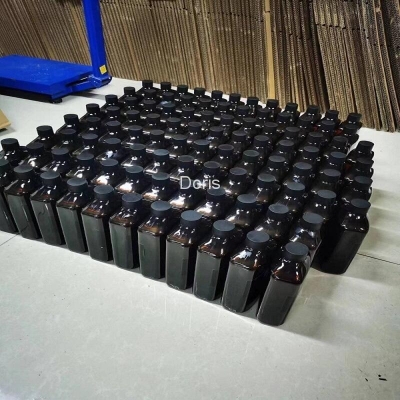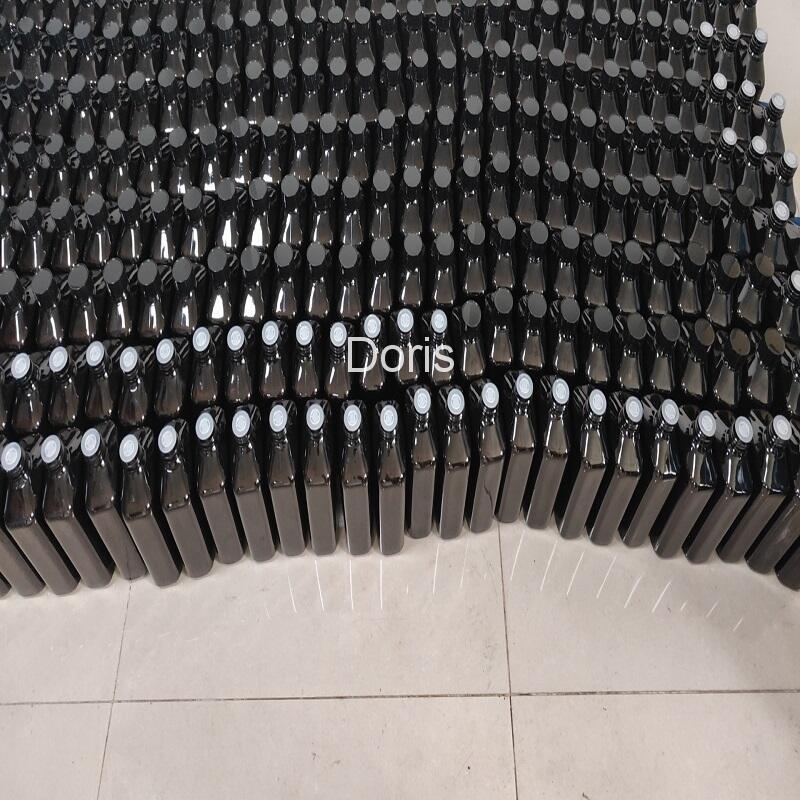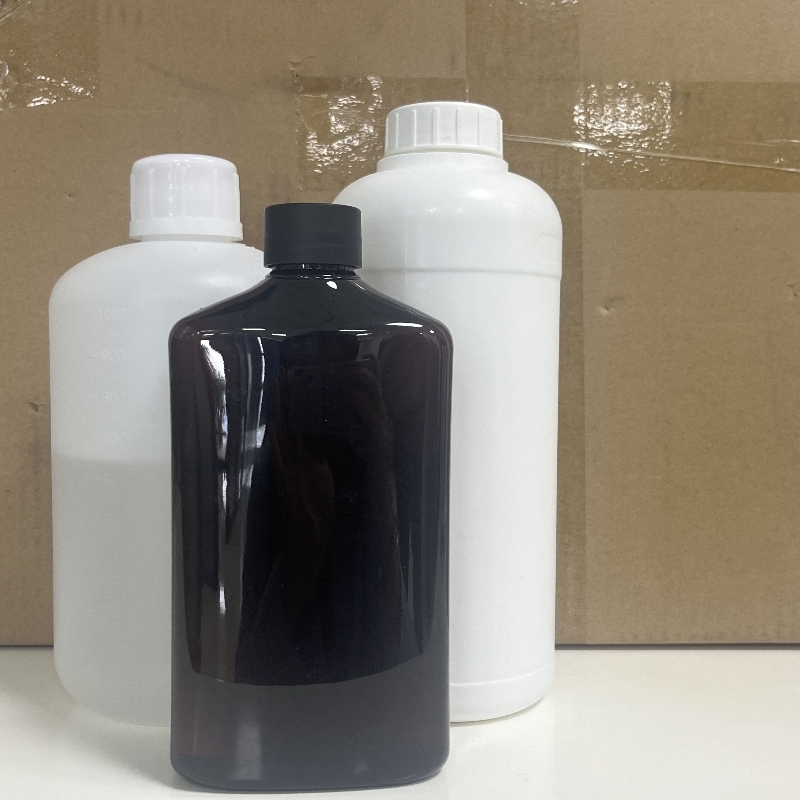Application of conduction heat transfer drying equipment in pharmaceutical industry
-
Last Update: 2014-01-14
-
Source: Internet
-
Author: User
Search more information of high quality chemicals, good prices and reliable suppliers, visit
www.echemi.com
Zyzhan Reading Guide: the conduction drying method indirectly transfers the heat needed for drying through the metal and other Shu surfaces The drying rate is lower than that of direct drying During constant speed drying, the product temperature has no relationship with the temperature of the heating source, which is generally the same as the saturation temperature of the gas pressure in the device In order to improve the drying rate and prevent the unevenness of drying, it is usually used to mechanically stir or rotate the container itself to increase or continuously update the heat transfer surface of the material, so it is necessary to study the adhesion of the heat transfer mechanism The drying device itself is expensive, but it is characterized by small load of dust collection system, high thermal efficiency, easy recovery of solvent, and the total cost is much cheaper than the direct drying method (1) belt dryer belt dryer consists of several independent unit sections Each unit section includes circulating fan, heating device, separate or public fresh air suction system and exhaust gas discharge system The operating parameters of drying medium quantity, temperature, humidity and tail gas circulation quantity can be controlled independently, so as to ensure the working reliability of the belt dryer and the optimization of operating conditions The operation of the belt dryer is flexible, the wet material is fed, and the drying process is carried out in a completely sealed box The working conditions are good, and the dust leakage is avoided It is suitable for drying flaky, strip and granular materials with good air permeability, especially for dehydrated vegetables, Chinese herbal pieces and other materials with high water content but not high material temperature (2) drum scraper dryer the drum scraper dryer is a kind of continuous operation equipment which dries the liquid-phase materials or strip materials attached to the outer wall of the cylinder by means of heat conduction through the rotating cylinder The feed liquid to be dried flows into the receiving tank of the drum dryer from the high-level tank The drying drum is driven by the transmission device and rotates at the specified speed The material is formed on the wall surface of the drum by a film distribution device Heat supply medium is continuously introduced into the cylinder to heat the cylinder, and the moisture content of the material film is vaporized by the heat transfer of the cylinder wall Then, the material meeting the drying requirements is scraped off by the scraper, and then transported to the storage tank by the screw for packaging Depending on the nature of the moisture removed by evaporation, it can be introduced into the corresponding treatment device through a closed cover; generally, it is water vapor, which can be directly put into the atmosphere through the exhaust pipe on the top of the cover The machine is mainly used to deal with liquid materials It can be heated and dried by steam, hot water or hot oil and cooled by cold water According to different material properties and process requirements, immersion type, spray type, grinding auxiliary type and other feeding methods can be used (3) hollow blade dryer (blade dryer) hollow blade dryer, also known as blade dryer, is mainly composed of W-shaped shell with jacket, two hollow blade shafts and transmission device The shaft is arranged with hollow blades, and the shaft end is equipped with a rotating joint led by the thermal medium The heat needed for drying water is transmitted to the material by the inner wall of W-shaped groove with jacket and the hollow blade wall In the drying process, the hollow shaft with hollow blade heats the material and stirs the material at the same time, so as to update the heating surface Is a continuous conduction heating dryer The heating medium is steam, hot water or heat transfer oil The heating medium is introduced into the jacket of the shell and two hollow propeller shafts to heat and dry the materials in the way of conduction heating, and the structures of different hollow propeller shafts are different This machine is suitable for the treatment of paste, granular, powder and other materials with good thermal stability It can also dry heat sensitive materials and recover solvents in the drying process under special conditions It is commonly used for drying or cooling materials such as carbon black, light calcium carbonate, titanium dioxide, barium carbonate, cyanuric acid, gypsum, clay, manganese dioxide, nylon and polyester chips, polyethylene, polypropylene (recovered solvent) (4) the dry materials of vacuum rake dryer are added from the middle of the shell of vacuum rake dryer Under the agitation of the continuously rotating rake teeth, when the materials contact the shell wall, the surface is constantly updated, and the dried materials are indirectly heated by steam (or hot water, heat transfer oil), but the water of the materials is vaporized, and the vaporized water is timely pumped away by the vacuum pump The dried material is indirectly heated by the heat carrier to vaporize the water in the material, and the vaporized water is discharged in time by the vacuum pump Due to the high operating vacuum, the water vapor pressure on the surface of the dried material is much higher than that in the evaporation space of the dryer shell in the range of 400-700mmhg Thus, it is beneficial to the discharge of the internal and surface moisture of the dried materials, the movement of water molecules of the dried materials, and the purpose of drying The vacuum rake dryer is suitable for materials that are heat sensitive, easy to oxidize under high temperature or easy to harden during drying, and materials that need to be recovered due to the steam discharged during drying Typical drying materials include sodium propenesulfonate, CMC, phthalocyanine blue, dye intermediate, carboxymethyl starch, maltodextrin, anthraquinone sulfonic acid, etc (5) the body of the double cone rotary vacuum dryer is slightly olive shaped, with covers at both ends and two shafts in the middle to support the body The body is jacketed for heating, and the body can rotate when drying, so that the material and the wall are often changed and contacted, which overcomes the disadvantage that the material in the vacuum oven mainly relies on the conduction of the heating cylinder and the thermal efficiency is low Rotary vacuum dryer has been widely used in fine chemical industry, medicine and other fields It is not suitable for materials with high viscosity or strong adhesion in the rotary process The equipment is mainly used for the concentration, mixing and drying of powder, granular and fibrous materials in medicine, chemical industry, food and other industries, as well as materials requiring low-temperature drying (such as biochemical products), more suitable for the drying of materials that are easy to oxidize, volatilize, heat sensitive, strong stimulation, toxic and materials that are not allowed to damage the crystal (6) the evaporation temperature of the volatiles in the material evaporation can be reduced after the vacuum oven is decompressed, which is suitable for the drying of various heat sensitive and easy oxide materials This device is usually a cylinder or other shell that can bear vacuum operation It uses electric heating or hot water, heat-transfer oil to heat through heating plate or heating pipe, and is suitable for batch production The oven is a general-purpose drying equipment, which has a wide range of applications It is a tray type intermittent drying equipment, and is used in pharmaceutical, chemical and food industries Heating, curing, drying and dehydration of materials and products in light industry and heavy industry Such as APIs, crude drugs, Chinese herbal pieces, extracts, powders, granules, granules, water pills, packaging bottles, pigment dyes, dehydrated vegetables, dried melons and fruits, sausages, plastic resins, electrical components, paint baking, etc (7) freeze dryer freeze dryer is to cool and freeze the material liquid first, and then reduce pressure to sublimate the ice to obtain dry materials Because the whole process is carried out below freezing point, it is often used for drying thermal sensitive materials Because it is difficult to heat the frozen materials in vacuum, and the water vapor condensed and sublimated under reduced pressure needs a large refrigeration system, so the drying cost is large Freeze the moisture in the material with high heat sensitivity and keep it below freezing point under high vacuum Make the water sublimate and separate from the material The loss of effective components is less, but the drying rate is low The above are the basic types of several common drying devices We can carry out variant development on the basis of the original basic models according to the specific requirements of users and material drying process.
This article is an English version of an article which is originally in the Chinese language on echemi.com and is provided for information purposes only.
This website makes no representation or warranty of any kind, either expressed or implied, as to the accuracy, completeness ownership or reliability of
the article or any translations thereof. If you have any concerns or complaints relating to the article, please send an email, providing a detailed
description of the concern or complaint, to
service@echemi.com. A staff member will contact you within 5 working days. Once verified, infringing content
will be removed immediately.







